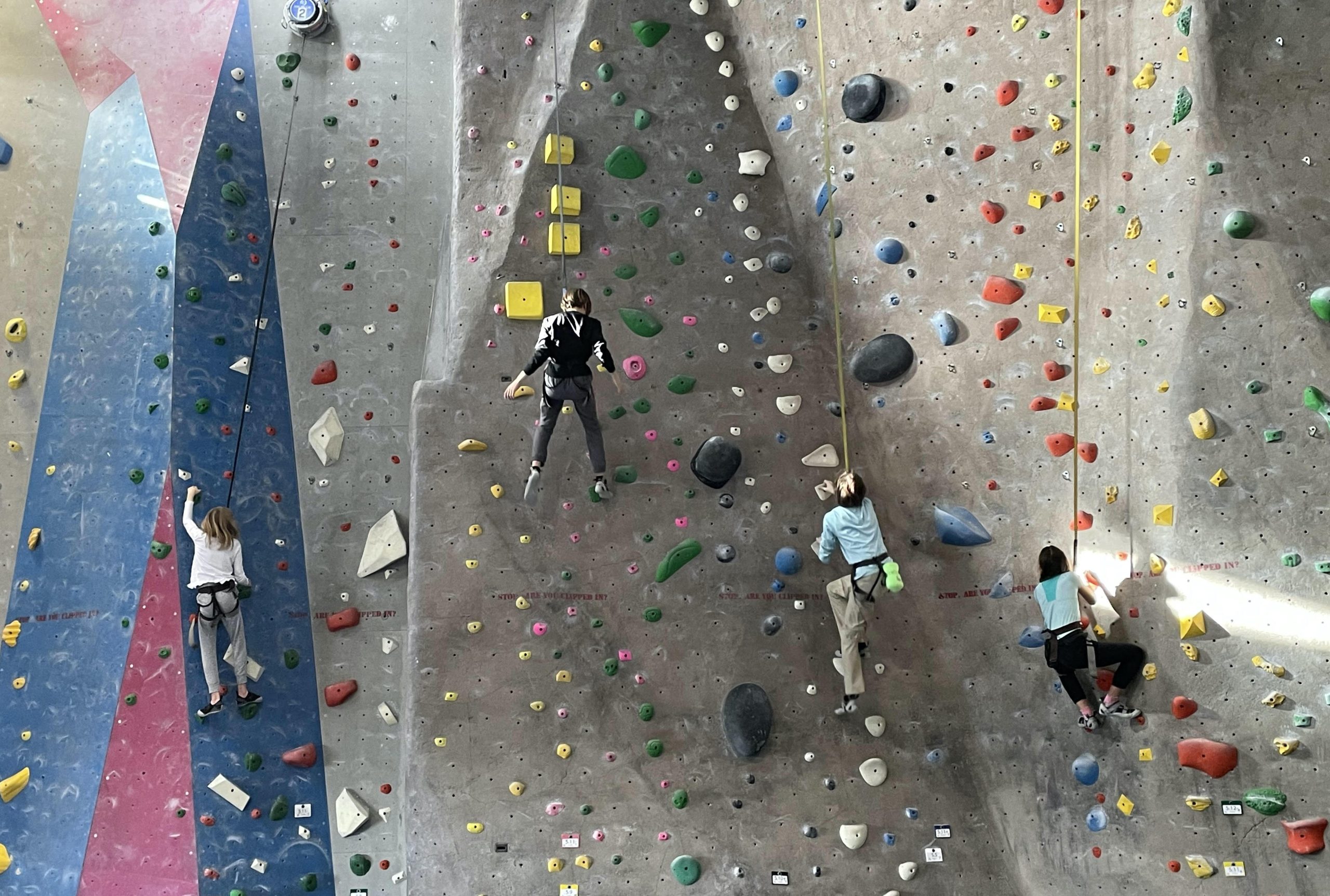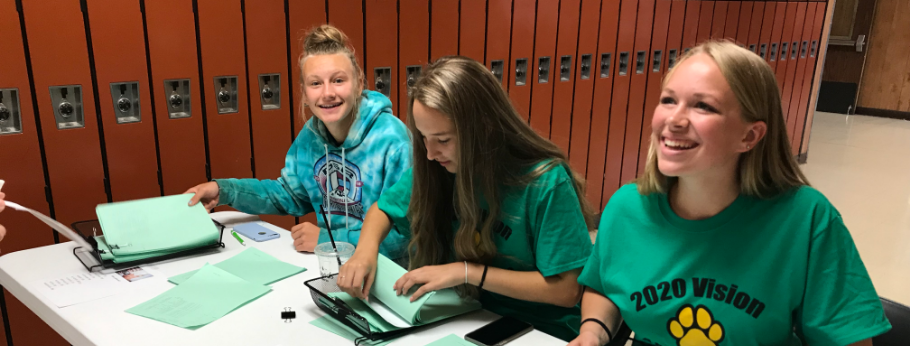
Home Connect a Uniquely Lynden Educational Offering
Lynden Schools responded to families during the pandemic, developing unique strategies for ensuring families connected with certificated teachers at their personal comfort level. For some, that included Lynden being one of the first public schools in the state to return to in-person learning. For others, that meant the retooling of Home Connect, a program still thriving with nearly 150 students partnering with the school in a flexible, customizable program that connects students to teachers.
Home Connect is a stand-alone program under the purview of Lynden Academy where parents serve as the primary educator, home—or wherever home happens to be—is the classroom and Lynden teachers partner with families as a resource and support with weekly checks.
“During the pandemic, there were a greater number of families more interested in the academic pathways of their children,” says David VanderYacht, Lynden Schools superintendent. “There was just this range of interests, so we discovered our best path forward was to provide as many options for families to choose from.”
That spirit of providing flexible options has only grown.
“I look at this from a family’s perspective,” says Marj Hendricks, one of the two Home Connect certificated teachers, along with Lona Smit, who each have spent nearly 30 years as a classroom teacher at Lynden Schools. “This is such a great opportunity for them no matter their situation. There are a lot of reasons why they are a part of Home Connect and it gives them such a great option they wouldn’t otherwise have. I meet with parents who are so thankful they have this opportunity.”
The Purdy family is just one example, with three students participating, ranging from seventh grade to a junior. “We were drawn to the Home Connect program during COVID because it allowed us to take control of our three kids’ learning in a time with much uncertainty and we wanted to be able to establish a routine and stick with it,” says Allison Purdy, the students’ mother. “It also provided us with the ability to cater to each child’s learning style with the support of a teacher and provided a transcript for the high school years. The program is also fantastic in providing us with access to resources to round out our curriculum.”
Purdy says that during Home Connect, Danny, now a junior, has grown into enjoying math and science thanks to finding a curriculum that met his learning style, something she worked with Lynden Home Connect teachers to discover. Ethan, a freshman, is able to focus on the chance to build, create and explore, which fits his learning style. If there’s a subject that is more difficult, he can take it at his own pace.
“Home Connect is about the quality of learning and not about the quantity,” Purdy says. “If he completes everything early, he has more time to build or create something, go mountain biking or play video games with friends.”
For Ava, a seventh grader, by focusing her schoolwork into a concentrated time, she has more opportunity to explore her love of horses and be in the horse barn.
“It allows a flexibility the traditional setting doesn’t allow for,” Smit says. “We have students who travel and find ways to integrate those experience with what they are learning in their classes. Their attendance isn’t impacted if they are still learning on the road and showing evidence of the learning.”
The practical set-up has the parents as the lead educators, and the qualified teachers work with families to go over questions, problems or curriculum. The teachers check in with each student weekly, holding the students accountable for learning progress.
Open to students in kindergarten through high school, students who graduate from the Home Connect program earn a homeschool diploma through Lynden Academy. Students can also remain involved in the district’s extra-curricular activities, whether athletics, FFA or the variety of offerings Lynden provides. Some students also mix in classes at Lynden High, such as taking the ever-popular ceramics class from Scott Sahagian.
“They have options,” Smit says. “If they have a child interested in something musically and we teach that at the high school or at the academy, they can still participate, and the family isn’t having to teach that elective to them.”
Freedom and diversity are the calling cards of Home Connect. Freedom in curriculum is a major draw. The teachers work with families to select a curriculum tailored to a student’s needs. If a family wants a faith-based option, they can select that if they purchase it on their own. “If a high schooler starts in a language arts program and it is not a good fit for a variety reasons, just something that isn’t helping them grow as a learner, we can try other types until we find one that fits,” Smit says.
The Van Mersbergen family started in Home Connect for certainty in schooling during the pandemic while staying connected to Lynden. They’ve remained for the flexibility. With three of the family’s four students in Home Connect (the youngest, a third grader, attends Isom Elementary), each has a different reason to stay focused on their work to free them for other interests, whether to get a part-time job or engage in hobbies.
“If they stay focused, they will be done quicker, allowing them more time for other interests,” says Stacy Van Mersebergen, the students’ mother. “In a fast-paced world, having our kids doing school at home has allowed more time for family conversations and connection. I feel like the kids are less rushed, which ultimately affects their stress levels and mental health.”
Families appreciate the weekly accountability, allowing them a chance to share struggles or get additional tools and resources.
Van Mersbergen says that while they’ve had a tremendous experience within Lynden Schools, experiencing amazing teachers, the choice of Home Connect is about their own kids. “While we do study all the core subjects and are held to the same graduation credit and course requirements as the rest of the district, we have much flexibility in the curriculums we choose, as well as in their electives,” Van Mersbergen says. “We can choose curriculum that works with each child’s particular learning style and interests.”
The family also stays fully connected to the district. Ellie, a senior, participates in school activities and dances, including playing on the tennis team, and Lily, a sophomore, recently wrapped her role in the spring’s Fiddler on the Roofperformance.
Home Connect flexibility happens on a macro level, but also a micro level. Hendricks had one family spend a day at an aquarium, completing a sea life unit before they went. Another traveled to Disneyland and did an entire unit on engineering by looking at amusement park rides as part of their experience. Smit says she works with a family who is training their children to be pilots, so they fly planes and integrate that into their learning. Another example saw a family visit a variety of National Parks, all part of their learning. One special education student helps her family raise chickens and ducks, an “awesome” experience for her in a hands-on setting.
Often high schoolers connect with trade, tech or college courses offered in the community. And that includes the highly capable, as one seventh grader in the program recently finished a calculus course at Arizona State University while another family has a sixth grader working through a Johns Hopkins physics course.
Home Connect also allows some students to explore non-traditional settings that may be more comfortable for them. “Marj and I both taught in traditional buildings, I was there 27 years,” Smit says.” I know if I could have taken some of my middle schoolers and put them in a program that started to steer them in an area they would have really flourished as learners. Pre-COVID we didn’t have access to a lot of things we now know we can do virtually.”
Smit says students of all ages are excelling. The community-driven opportunities abound for high schoolers, but many families connect at the younger ages too, giving families of elementary students the flexibility to take their learning in the direction the want.
“It really is about what is best for each child,” Van Mersbergen says, “and that can change year to year.”


